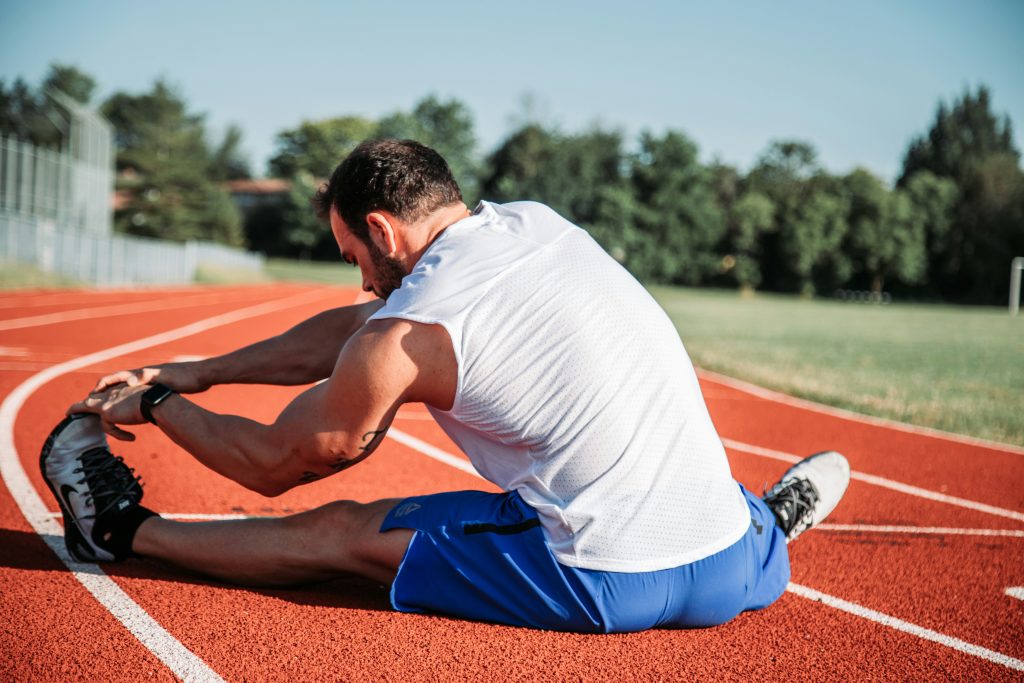WHAT IS STRETCHING?

Stretching is a physical activity that works on elongating muscles, tendons and ligaments to improve flexibility and to increase range of motion. Stretching plays on the strength of the muscle’s passive resistance.
Excessive strength training without incorporating stretching can limit range of motion, potentially leading to injuries. While flexibility is crucial, surpassing a certain threshold may compromise performance.
HOW MANY TYPES OF STRETCHING ARE THERE?
Stretching can be done through various techniques, including static stretches, dynamic stretches and proprioceptive neuromuscular facilitation (PNF).
Static stretching: involves holding a position for a certain amount of time (between 15-60 seconds) without movement, promoting flexibility and muscle relaxation. The stretch can be very light or strong depend on the goal.
Dynamic stretching: includes controlled movements that mimic the activity to be performed. It prepares the muscles for action and increases the blood flow. It is often used as part of a warm-up routine.
Unlike static stretching, dynamic stretching requires muscle engagement during the stretch.
PNF: this technique incorporates isometric contractions followed by passive stretching, it enhances range of motion. It is done with a partner or in rehabilitation sessions to increase flexibility more rapidly.
WHEN DO YOU NEED TO STRETCH MUSCLES?
You need to stretch muscles in the following three instances:
During warm up :
Dynamic stretching is commonly recommended during warm-ups. It enhances joint mobility, promotes better coordination and improves flexibility preparing your body for more intense activity reducing the risk of injury. Examples include shoulder circles, hip circles, leg swins, walking lunges…
Static stretching in warm-ups is linked to decreased performance; losing a little bit of its reactivity, making a muscle less explosive for few hours, enough to hinder a workout; flexibility is important but beyond a certain point, too much flexibility will work against performance.
After work out:
This is the best time to do a static stretching, even if there is a small reduction in performance it will not be a problem. With warm muscles, stretching helps maintain a good range of motion, minimizing the risk of injuries. It can help to relax muscles, prevent stiffness and contribute to overall flexibility. It is important to hold the stretch for 15-60 seconds allowing the muscles to gradually lengthen.
Between workouts:
Static stretching can be used between workouts to speed recovery; however initiating stretching with cold muscles can be dangerous; so you should always prioritize warm-up before incorporating stretches.
What I prefer is to opt for active recovery stretches like walking, gentle biking, yoga and foam rolling. It can help reduce muscle tightness, activate circulation and help prevent injuries.
Remember, stretching is like convincing a stubborn jar to open – sometimes you need a little patience and a gentle twist.
By Dr. Lara Mouawad
Doctor in physiotherapy – Sports rehabilitation expert

You may also like
17th Edition of the NDU International Film Festival – Beirut Shorts
NDU International Film Festival – Beirut Shorts, organized by the Faculty of Humanities, Depar
Is stress identified as the primary cause of neck pain ? And is there a universally applicable treatment protocol for all neck pain ?
Stress can contribute to neck pain through different mechanisms; when we are stressed, the body resp
Lakom stories – DR. Lara Mouawad
After obtaining her university degree at 22 and launching her career, Dr. Lara Mouawad decided to


